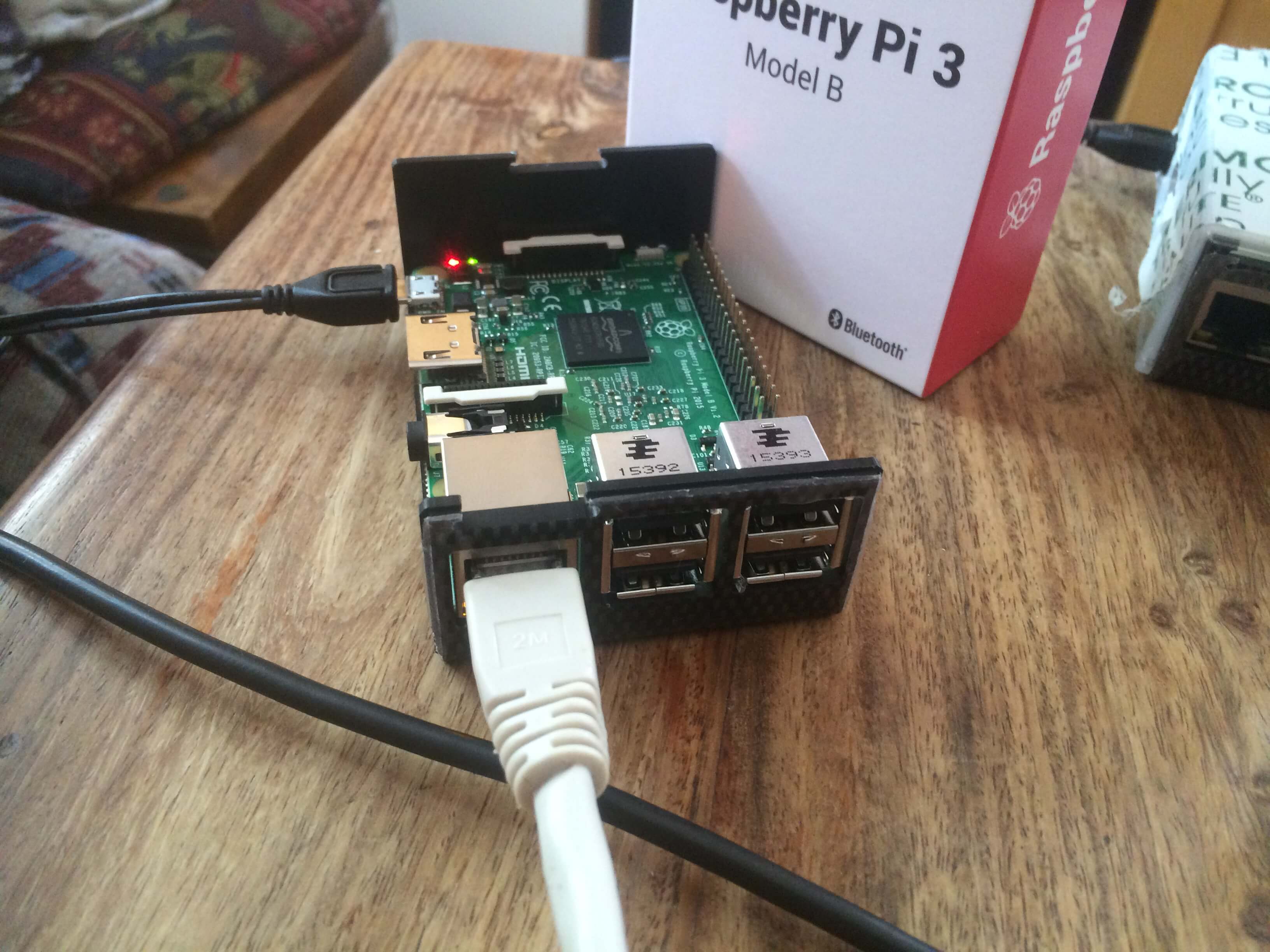How To Use Monitor Raspberry Pi Behind Firewall Without MAC
So, here's the deal. You've got this awesome Raspberry Pi sitting at home or in your office, quietly doing its thing. But what happens when you want to access it remotely while it's tucked behind a firewall? Oh, and by the way, you can't rely on MAC address filtering because... well, reasons. This is where things get tricky but don't worry, we’ve got your back. Today, we’re diving deep into how to use a monitor Raspberry Pi behind a firewall without MAC. It’s gonna be a wild ride, but trust me, you’ll ace this.
In this article, we're gonna break down everything you need to know about remote Raspberry Pi monitoring. Whether you're a tech enthusiast, a hobbyist, or just someone who wants to keep an eye on their home automation system, this guide will walk you through the process step by step. So grab a coffee, get comfy, and let’s dive in.
Before we go any further, let’s make one thing clear. This isn’t just about accessing your Pi; it’s about doing it securely and efficiently. We’ll cover all the bases, from setting up SSH tunnels to configuring firewalls and everything in between. By the end of this, you’ll be a pro at managing your Raspberry Pi from anywhere in the world. Now, let’s get started.
- Livvy Dunne Nudes Separating Facts From Fiction In The Digital Age
- Brittney Atwood Nude Separating Facts From Fiction And Exploring The Bigger Picture
Understanding the Basics: What Is Raspberry Pi Monitoring?
Alright, let’s start with the basics. Raspberry Pi monitoring is essentially about keeping tabs on your Pi’s performance, network activity, and overall health. Whether you’re running a home server, a media center, or even a weather station, monitoring is key to ensuring everything runs smoothly. But when your Pi is behind a firewall, things get a little more complicated.
Now, here’s the kicker: firewalls are designed to block unauthorized access. That’s great for security, but not so great when you actually need to access your Pi remotely. And if you’re not using MAC address filtering, you’ll need to find alternative methods to make this happen. Luckily, there are plenty of ways to achieve this without compromising security.
Why Is Monitoring Behind a Firewall Important?
Monitoring your Raspberry Pi behind a firewall is crucial for several reasons. First and foremost, it allows you to troubleshoot issues remotely. Imagine being able to fix a problem with your home automation system without having to physically be there. Sounds pretty sweet, right?
- Mckinley Richardson Naked The Truth Behind The Headlines
- Melissa Oneil Nude Facts Myths And The Truth Behind The Controversy
Secondly, it gives you peace of mind. Knowing that your Pi is running smoothly and securely is invaluable, especially if you’re using it for critical tasks like data collection or security monitoring. And let’s not forget about convenience. Being able to access your Pi from anywhere in the world is a game-changer.
But here’s the thing: doing it securely is equally important. You don’t want to open up your network to potential threats just to access your Pi. That’s why we’ll be covering secure methods to achieve this without relying on MAC address filtering.
Setting Up SSH for Secure Access
One of the most popular methods for accessing your Raspberry Pi remotely is through SSH (Secure Shell). SSH provides a secure way to connect to your Pi and manage it from afar. Here’s how you can set it up:
- Enable SSH on Your Pi: Head over to the Raspberry Pi Configuration tool and enable SSH under the Interfaces tab.
- Find Your Pi’s IP Address: Use the command `hostname -I` to find your Pi’s local IP address.
- Set Up a Static IP: Assign a static IP address to your Pi to ensure it doesn’t change every time you reboot.
- Install an SSH Client: On your remote device, install an SSH client like PuTTY (Windows) or use the built-in Terminal (Mac/Linux).
Once you’ve set up SSH, you can connect to your Pi using its local IP address. But what happens when you’re outside your local network? That’s where port forwarding and SSH tunnels come into play.
Configuring SSH Tunnels for Remote Access
SSH tunnels are a powerful way to access your Raspberry Pi behind a firewall. Here’s how you can set one up:
- Create a Reverse SSH Tunnel: Use the command `ssh -R 2222:localhost:22 user@remote-server` to create a reverse tunnel.
- Access Your Pi via the Tunnel: Once the tunnel is established, you can connect to your Pi using the remote server’s IP address and the specified port.
This method allows you to bypass firewalls and access your Pi securely. Just make sure to use strong passwords and enable two-factor authentication for added security.
Firewall Configuration: Making It Work
Firewalls can be a bit of a pain, but they’re essential for keeping your network secure. To allow remote access to your Raspberry Pi, you’ll need to configure your firewall settings. Here’s what you need to do:
- Open the Necessary Ports: Allow incoming traffic on port 22 (SSH) or any other port you’re using for remote access.
- Set Up Port Forwarding: Configure your router to forward incoming traffic on the specified port to your Pi’s local IP address.
- Use a Dynamic DNS Service: If your public IP address changes frequently, consider using a dynamic DNS service to keep track of it.
Remember, security should always be your top priority. Avoid opening unnecessary ports and use strong passwords to protect your network.
Best Practices for Firewall Configuration
When configuring your firewall, it’s important to follow best practices to ensure maximum security. Here are a few tips:
- Limit Access: Restrict access to specific IP addresses or ranges to minimize the risk of unauthorized access.
- Enable Logging: Keep a log of all incoming and outgoing traffic to monitor for suspicious activity.
- Regularly Update Your Firewall: Keep your firewall software up to date to protect against the latest threats.
By following these best practices, you can ensure that your Raspberry Pi remains secure while still being accessible from anywhere.
Using Third-Party Tools for Remote Access
If you’re not comfortable configuring SSH tunnels and firewalls, there are plenty of third-party tools that can simplify the process. Here are a few options to consider:
- Weaved: A cloud-based service that allows you to access your Raspberry Pi remotely without the need for port forwarding.
- ngrok: A simple tool that creates secure tunnels to your Pi and provides a public URL for remote access.
- TeamViewer: A popular remote desktop solution that works seamlessly with Raspberry Pi.
These tools offer a user-friendly way to access your Pi from anywhere, but keep in mind that they may have limitations or require a subscription for advanced features.
Pros and Cons of Third-Party Tools
While third-party tools can save you time and effort, they’re not without their drawbacks. Here’s a quick rundown of the pros and cons:
- Pros: Easy to set up, no need for technical expertise, often free for basic use.
- Cons: Potential security risks, limited functionality, reliance on third-party services.
Ultimately, the choice depends on your specific needs and comfort level with technical configurations.
Monitoring Tools for Raspberry Pi
Now that you’ve got remote access figured out, let’s talk about monitoring tools. There are plenty of options available to help you keep an eye on your Raspberry Pi’s performance and health. Here are a few worth considering:
- Grafana: A powerful visualization tool that integrates with various data sources to provide real-time monitoring.
- Prometheus: An open-source monitoring system that collects metrics from your Pi and alerts you to potential issues.
- htop: A simple yet effective command-line tool for monitoring system resources like CPU and memory usage.
These tools can help you stay on top of your Pi’s performance and quickly identify and resolve any issues that arise.
Setting Up Grafana for Real-Time Monitoring
Grafana is one of the most popular monitoring tools for Raspberry Pi, and for good reason. Here’s how you can set it up:
- Install Grafana: Use the command `sudo apt install grafana` to install Grafana on your Pi.
- Configure Data Sources: Connect Grafana to data sources like Prometheus or InfluxDB to collect metrics.
- Create Dashboards: Use Grafana’s intuitive interface to create custom dashboards for real-time monitoring.
With Grafana, you can monitor everything from CPU usage to network activity, all from a single dashboard.
Security Best Practices for Remote Raspberry Pi Access
Security should always be a top priority when accessing your Raspberry Pi remotely. Here are a few best practices to keep in mind:
- Use Strong Passwords: Avoid using default passwords and opt for strong, unique passwords for all accounts.
- Enable Two-Factor Authentication: Add an extra layer of security by enabling two-factor authentication for SSH and other services.
- Keep Software Updated: Regularly update your Pi’s operating system and all installed software to protect against vulnerabilities.
By following these best practices, you can ensure that your Raspberry Pi remains secure while still being accessible from anywhere.
Common Security Threats and How to Avoid Them
When it comes to remote Raspberry Pi access, there are a few common security threats to be aware of. Here’s how to avoid them:
- Brute Force Attacks: Use fail2ban to block repeated login attempts and protect against brute force attacks.
- Malware Infections: Regularly scan your Pi for malware and avoid downloading software from untrusted sources.
- Unauthorized Access: Restrict access to specific IP addresses and monitor login attempts for suspicious activity.
By staying vigilant and taking proactive measures, you can keep your Raspberry Pi safe from potential threats.
Conclusion: Taking Action
And there you have it, folks. A comprehensive guide on how to use a monitor Raspberry Pi behind a firewall without MAC. Whether you choose to set up SSH tunnels, configure firewalls, or use third-party tools, the key is to do it securely and efficiently. Remember, monitoring your Pi is not just about convenience; it’s about ensuring its performance and security.
So what are you waiting for? Dive in and start exploring the world of remote Raspberry Pi monitoring. And don’t forget to share your experiences in the comments below. Who knows, you might just inspire someone else to take the leap!
Table of Contents
- Understanding the Basics: What Is Raspberry Pi Monitoring?
- Why Is Monitoring Behind a Firewall Important?
- Setting Up SSH for Secure Access
- Firewall Configuration: Making It Work
- Using Third-Party Tools for Remote Access
- Monitoring Tools for Raspberry Pi
- Security Best Practices for Remote Raspberry Pi Access
- Conclusion: Taking Action



Detail Author:
- Name : Khalid Homenick
- Username : gutkowski.tierra
- Email : roberta29@hotmail.com
- Birthdate : 1996-11-02
- Address : 315 Hans Pike East Johann, RI 18513-9265
- Phone : (540) 447-0465
- Company : Bauch Inc
- Job : Inspector
- Bio : Rem molestiae est dolorem rerum omnis ut. Quo voluptate et optio delectus est sint ut. Non quibusdam natus perferendis animi architecto. Dignissimos deleniti voluptatem optio iusto est.
Socials
tiktok:
- url : https://tiktok.com/@mcglynn1976
- username : mcglynn1976
- bio : Corporis temporibus et est repudiandae ullam hic necessitatibus.
- followers : 1838
- following : 289
twitter:
- url : https://twitter.com/rhiannamcglynn
- username : rhiannamcglynn
- bio : Eligendi iure hic ea quo amet ad aut. Consequatur quam ducimus id fugit.
- followers : 936
- following : 1189
facebook:
- url : https://facebook.com/rmcglynn
- username : rmcglynn
- bio : Aut fugit iusto quaerat maiores quod sit ad.
- followers : 3215
- following : 1000
instagram:
- url : https://instagram.com/rhianna_mcglynn
- username : rhianna_mcglynn
- bio : Deleniti est et occaecati id dolorem occaecati. Vero officiis rerum ea porro rerum.
- followers : 1635
- following : 2846